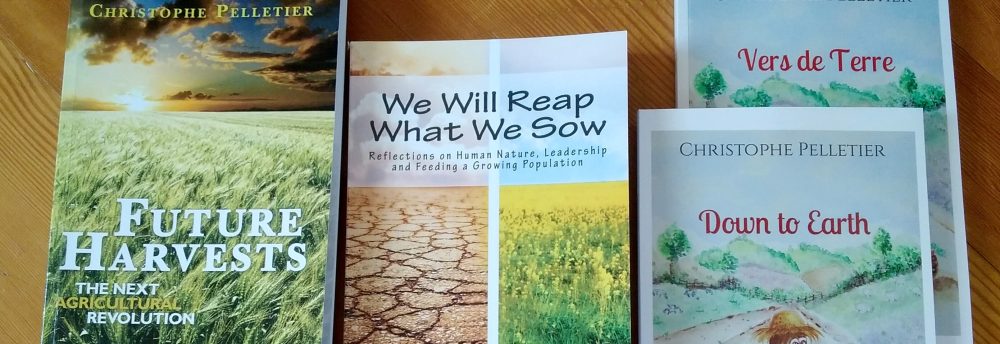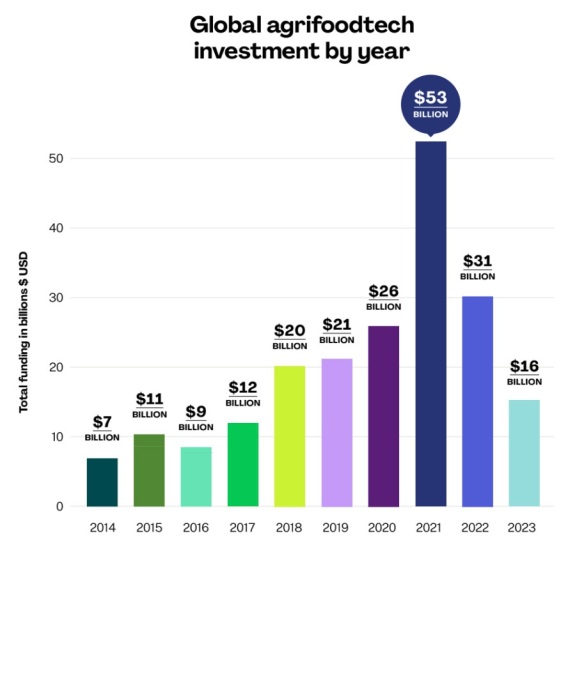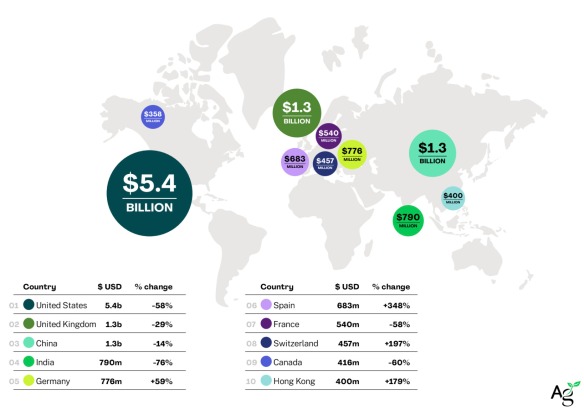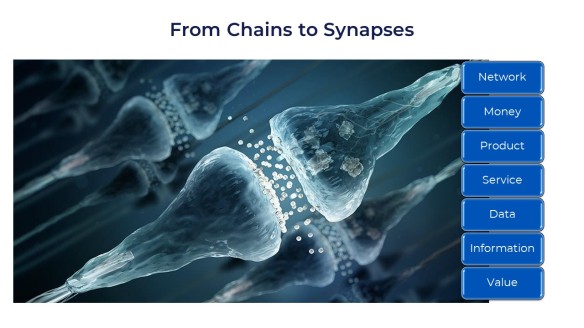Recently, I accidentally came across someone’s self-description as a techno-utopian. Although it sounds cute, this concept does not really appeal to me. It lacks something I always look for in tech and what my clients always appraciate in my work: the essential stuff. Nonetheless, I felt compelled to look up the definition of utopia in the dictionary.
Utopia: an imagined place or state of things in which everything is perfect.
Then, right away it put things into place. “Imagined” is fine with me. Probably because as anyone who knows me would tell you that I have no shortage of imagination, and often just a little too much of it. The way I look at it, there cannot be enough of it. After all, imagination would not be imagination if we gave it boundaries and limits. The very core of imagination is that we can think of anything. In my work, I have been asked many times to brainstorm about how to use something new and what applications, even silly ones, it can offer.
The second part of the definition is a bit more of a problem. “Perfect” can simply not be defined. Nobody knows what it means. Being a perfectionist comes down to chase an illusion. In the meantime, some things need to actually happen. I understand and love excellence and the drive to always improve. I don’t care all that much for perfect. Clearly, I am not and never will be a utopian of any sort. I tried to think and find anything utopian that ever became reality… and I could not find anything. On the other hand, dystopia… Utopian thinking sounds great. Who wouldn’t want a perfect world, whatever that might mean? What’s not to like about utopian thinking? It sounds great, it doesn’t challenge anyone or hurt their feelings. It is totally risk-free and makes you look really nice, but more in a Miss Universe pageant sort of way, after a while. At some point, it’s time to come down teh cloud and start to actually solve real problems. When it comes to the future of food and agriculture, we better focus on adapting and improving, and certainly technology has an important role to play, but there is a time to dream and there is a time to achieve actual progress. During my professional life, I have heard time and time over about the many silver bullets that were going to fix all the problems. After almost 40 years of working in the food and agriculture sector, I am still waiting for any of such bullets. Actually, I still hear about the same problems. Yet, there have been many changes, many innovations and many ideas. Lots of things have happened and yet, I believe that we all can agree that despite all of that, our world is in more dire situation today than it was 40 years ago. If technology is the panacea, why don’t we succeed to solve problems, might you ask?
A large part of the answer lies in the fact that solutions are not solely of a technical or technological nature. That’s the mistake number 1 made by the tech people, and the techno-utopians. There is no shortage of technical and technological solutions, and there have never been. Actually, we have had all the necessary technologies available to fix our problems for quite some time. Of course, there is always room for better ones. We always can and must improve, as I mentioned earlier. So, what’s stopping us?
Well, it’s not technology or innovation. The dreamers and the visionaries have done quite well. No, what is stopping us is something I have discovered early in my professional life. Here is a quick flashback. When I started my career, if there was a hard-nosed all-rational science and tech believer and aficionado, that would have been me. I love the hard and cold facts of exactness. Subjective and more emotional stuff would not even be on my radar screen. It’s simply was not factual. Then, my career moved in the direction of sales and management. Then, I discovered that actually nothing happens unless it aligns with the subjective and emotional stuff. Facts, science and technology don’t make it if there don’t align with beliefs, values and the personal interests (usually those of a financial nature) of the users. Ha! There is the main hurdle!
The thing is, tech is more comfortable that jobs require dealing with people. Things don’t disagree. they don’t show anger and don’t challenge you. In tech, you’re in control. It feels rather safe. When dealing with people, you have to deal with differences of opinions, pushback, personal issues, negative emotions, even aggression and fights. It’s a lot more challenging and personal. Most people prefer the tech bubble to the real world. I understand why.
The limitation to solving problems is not technological. It actually plays at two main levels. The first one is the systemic level. If we don’t change the systems, actually meaning changing the way we think, technology is not going to break through. The second level is money, pure and simple. The numbers need to add up to succeed. As I said, technologically speaking we have all the tools we need. The problem is that often, it is not economically viable. It is not viable for several reasons. One is that it is indeed not economical. Another reason is that the math does not include externalities (the long-term costs and/or benefits) and the math is skewed, but nonetheless, the numbers do not look attractive on the short-term. Another reason is that the perceived value of the solution does not match its price tag.
Here is where my self-description in the title of this post comes to life. I focus on the essential stuff, not just the “beauty” of technologies and innovations. In 2015, I wrote a post on this blog about why technology is much more that just the technical part. My second book, We Will Reap What We Sow, focuses specifically on human nature and how it can influence how our future will look like. I always take the human dimension in my analysis, simply because if people don’t buy the story, it does not happen. They don’t adopt the technology, don’t see the point of changing the ways of the present, and the system stays the same in its main lines. Same thing with the money. If there is no financial advantage, they do not adopt the new technology. This is particularly important when it comes to business-to-business. I like to categorize technologies into two groups: tools and gadgets. In a business-to-business environment, tech has to be a tool, meaning the tool user must have an advantage in using the technology. It either saves time or saves money, and ideally both. If not, even the most wonderful utopian tool in the world will end in the “museum of great ideas that never succeeded”. Next to the tools, there are the gadgets. Those are different. It is not as much about savings as it is about emotional aspects. Money is less important. From what I just described, to me agtech are tools. Foodtech could be tools, but most are really gadgets, especially when it comes to consumer products. Many novel foods do not come close to have the same nutritional qualities as the existing category of foods that they aim to replace. And then, they are surprised that the hype is short-lived, because there is a little something that tech people overlook: consumers are not completely stupid and the large majority can tell when they see nonsense.
I guess you might tell me that I am wrong when I say that tech people neglect the financial side. Well, yes and no. There are two groups involved in tech.
One group consists of let’s say the tech geeks who want to build a business. They are totally focused on the technical aspects. They neglect the human side of the business and overlook the need to get to profitability. Often, they have about zero understanding of business management and of marketing. They assume that because they develop something that looks great in their eyes, it should succeed. Unfortunately, not everyone looks at things through the same lens. Further, they tend to not think beyond their little bubble and have no idea of what possible problems they might create, but that’s the tech modus operandi: “Promise anything to get funding, think of consequences later”.
The other group consists of the investors. Those are really focused on the money. Their understanding of technology varies greatly, which is why they sometimes invest in total dogs. The weakness of the investing community is that they love money so much, they expect high and fast return. Food and especially agriculture do not show that kind of dynamics. Usually, it is a long slow process and the returns are often modest. Of course, there are sometimes lucrative niches but they are rare and once the niche is full, the potential for further growth is rather limited, and they get stuck. I guess the investing community must have come to that realization, as the level of investments in agtech and foodtech is dropping, as showed in these graphs I found on Agfunder. They speak for themselves. And it is not just agtech and food tech. Wall Street has started ditching ESG investments, too. Obviously, utopians don’t generate value, and the real world eventually focuses on the essential stuff.
Of course, raising interest rates play a role, as suddenly free money is no longer available.
Yes, utopia is still a long way away, but that is the very nature of utopia. Cute fairy tales populated with unicorns (as you probably know, a term used for successful start-ups) are nice but they are just that: fairy tales. Saying the you believe that technology is going to solve all the problems does not necessarily make it so. Beliefs and reality are two very different things. To me, the techno-utopian discourse sounds too much like what sect members very diligently like to tell around without exerting hardly any critical thinking. Realistic aspects seem to be optional in this approach. Many see themselves as evangelists (see the connection with pseudo-religion now?). It is so lame, it is actually ineffective, except for the select few (“the sect leaders”) who fill their bank accounts by using the gullible and the naive who relay their message. But that’s what the influencer concept is all about, and it works. In a way, I see techno-utopians as followers, and techno-realists as precursors. In psychology, it is known that two basic needs of human beings are attachment and authenticity, and these two needs tend to go against each other. The balance between the two is difficult to find and failing to do so has psychological consequences. Followers give the preference to attachment . Precursors choose for authenticity and attachment comes from the authentic self. I can find myself in this description.
Understand me well, I like making money. In my professional life, I have turned around business operations in six countries, so you can trust me for being financially quite sharp. I also know that it did not happen by telly cute fairy tales or wishful thinking. It happened with stark business realism.
The techno-realist in me is totally insensitive to fairy tales and hypes of all sorts. I guess I still have that hard-facts no-nonsense part of me inside, but paired with my sense for human nature and financial rigor, I used both my cerebral hemispheres, not just half. I can spot what has potential to work and what doesn’t. And I have in the past. Very quickly, I will list the most significant cases of where I did not share the utopian naivety here, and for which history proved me right.
Vertical farming. I always saw more potential for low-tech vertical farming. I have never been impressed with tech vertical farming for a few simple reasons. The fixed costs are so high, it can work only for specific niches with high-end restaurants for fancy greens. Problem is only a small share of consumers eat in high-end restaurants, and that the world can not be fed on arugula and basil only. There have been enough bankruptcies in the sector for me to rest my case.
Blockchain. I have never seen blockchain as taking over the way the tech world was trying to convince us. Frankly, the benefits were rather marginal, all the more so that many businesses still don’t have a clear idea of what traceability and transparency really mean for consumers, despite what they think. But the development of artificial intelligence could revert the situation by providing a much more dynamic and practical tool. AI can definitely boost the development of very useful super-ledgers.
Tech plant-based fake meat imitations. To me, everything has been wrong with that stuff since day 1, and probably even before. OK, I’ll admit the Silicon Valley billionaires have done excellent PR to create the hype, but as the saying goes “you can fool some of the people some of the time, but you cannot fool all the people all the time”, and as I said, consumers are not completely stupid. That has been one of the main mistakes, but I cannot think of anything that those companies may have done right. It has been such a demonstration of incompetence in all areas, I won’t comment any further. Substitutes for meat have potential, but the ones that succeed are mostly low-tech local businesses run by humble people, and that makes a world of difference.
Lab meat. Although I have always considered it can have some potential for certain applications, I still don’t think it will be near the kind of volumes they think and I have always doubted their timelines. When I was writing my first book, Future Harvests, in 2009, I had a conversation with some of the Dutch pioneers. By then, I was told that lab burgers would hit the store shelves in five years. We are now 15 years later and not any noticeable volume of lab burger in sight in the stores. Recently, I heard the claim that it will be in the stores in 10 years from now. I’ll be waiting to see. Further, still the same story about the cost reduction coming soon. It is always “soon”. “Soon” is a euphemism for “no commitment on when” and for buying time and keeping on living on the investors’ money. And time passes by. I also love the term “parity”. What does it even mean? Parity with which product? If they want to price it at parity with meat, just have them do so. Change the price and see if it sells. Further, stories like Upside Foods and their chicken lab meat just contribute to undermine any credibility that is left. No wonder, the money does not flow all that much anymore in that category.
Although still in development, precision fermentation is another sector that creates some buzz. It is the current flavor of the month, taking over from plant-based and lab meat in the spotlight, as interest has faded in these two catgories. “Precision” sounds good, doesn’t it? Actually, the term is PR, something the lab/cell/cultured meat still has not been able to find, yet. As such, precision fermentation is not even particularly new. I find people in that sector rather frustrating. As everybody else who promotes alternative protein, they are obsessed with the claim to replace animal farming, and farming altogether. For starters, animal products are not just protein, they are so much more. Yet, even the animal farming sector prefers to reduce itself to protein, as they are terrified at the idea of having t talk about fat, while with the right choice of feed ingredients they could provide top notch essential fatty acids profiles in their products. The foodtech sector doesn’t even know what the production volumes of dairy, meats and eggs are. They have no clue of how much production capacity would be required to replace animal farming and how much it would cost to build. If they did, the fairy tales would collapse in no time. Considering the level of funding they already need for rather minor volumes, they are in for a surprise. Other source of frustration for me is that I never get straight answer to simple questions, such as “are you profitable?”, “what is your cost compared with the animal product you claim to replace” how much can you produce per year with your current production unit?” Sorry but “several thousands of tonnes” is not an answer. Is it 3,000 tons or is it 30,000 tons? I don’t know. Apparently, neither do they. Perhaps, I have not met the right people. About the claim tech proteins require hardly any land, they finally very reluctantly admit that to feed the microorganisms, they need sugar and lots of it, and just as reluctantly they finally admit that it is not all that sustainable. Yep, that sugar has to come from intensive specialized agriculture. ironical, isn’t it? Anyway, I’ll give them the benefit of the doubt, but it does not sound all that utopian after all. One problem they will face is the fact that they produce only molecules. For liquid products such as milk or eggs, the challenge is easier. There is no particular need to texture the protein. Nonetheless, albumin is not egg. You have to add the yoke. Using an old cooking test with a New York City fancy 3-star Michelin restaurant as a reference is not the best way to appeal to the overwhelming majority of the population who can’t afford to go in such a restaurant. Limiting themselves to albumin and telling there is cholesterol in the yoke as a reason why people should eat only egg white is not going to work with consumers. Try to live without any cholesterol at all and then let me know how that worked out! Once again, consumers are not stupid and they know if the novelty is comparable with the original thing or not. Same thing with milk proteins (casein, beta-lactoglobulin and lactoferrin). They are not milk. Milk contains and provides many other nutrients. Those who claim eggs and milk will be replaced are just following the same path as the plant-based meat imitations. That said, I see a lot more potential for these molecules as ingredients. Nothing new here. It has already been happening in dairy and with egg products for quite some time. There is also good potential, from a profitability point of view, in the sectors of health and wellness. Those are more niche markets but with good volumes and good prices. But trying to go after low price commodities like eggs in the shell and generic milk and cheese, will prove much more challenging. There is probably also some serious potential as a source of protein for animal feed, especially with an eye on essential amino acids profiles. Also, I see some possibilities in the fish feed sector. That’s the irony of protein alternatives. They have more chances of success in the animal feed sector to produce animal products, and that is fine. Every shift is useful.
Insects. That’s another development for which I saw much better prospects as animal feed ingredient than for human consumption, especially in Western countries. Anyway, I wrote about that on this blog years ago.
GMO herbicides and weed resistance. I was describing 15 years ago in Future Harvests, that mono-usage of the likes of Roundup Ready GMOs were going to end with massive issues of weed resistance. That’s exactly what happened. Anyone with basics in biology and understanding of how organisms mutate and adapt to their environment could have figured out that one. If you want to follow the matter, just check what the same groups of people who produced that mess are now working on in the area of biological herbicides with all the (should I say utopian) promises that goes with the need for funding. I don’t expect a smooth process.
So, as you can see a bit of a long story, why techno-utopian may sound nice but it works as long as it is talk. Although imagining new options and alternative is absolutely necessary, it is even more necessary to give it a serious reality check in the real world. That’s why I will never stop at imagining a future, I want to confront it with realism because that is where the action really is. Recently, I posted a video on my YouTube channel in which I answer questions about technology from viewers. The three questions are:
- whether technology the solution for the future
- which technologies will solve our problems
- if I agree with the people who say that food tech is a distraction that does not solve any problem
Copyright 2024 – Christophe Pelletier – The Food Futurist – The Happy Future Group Consulting Ltd.










